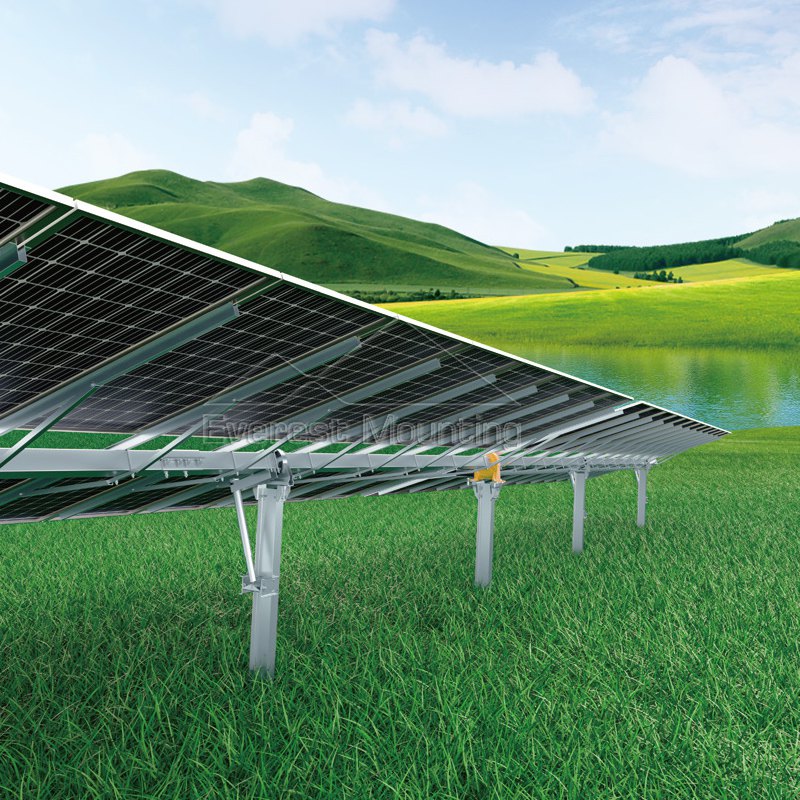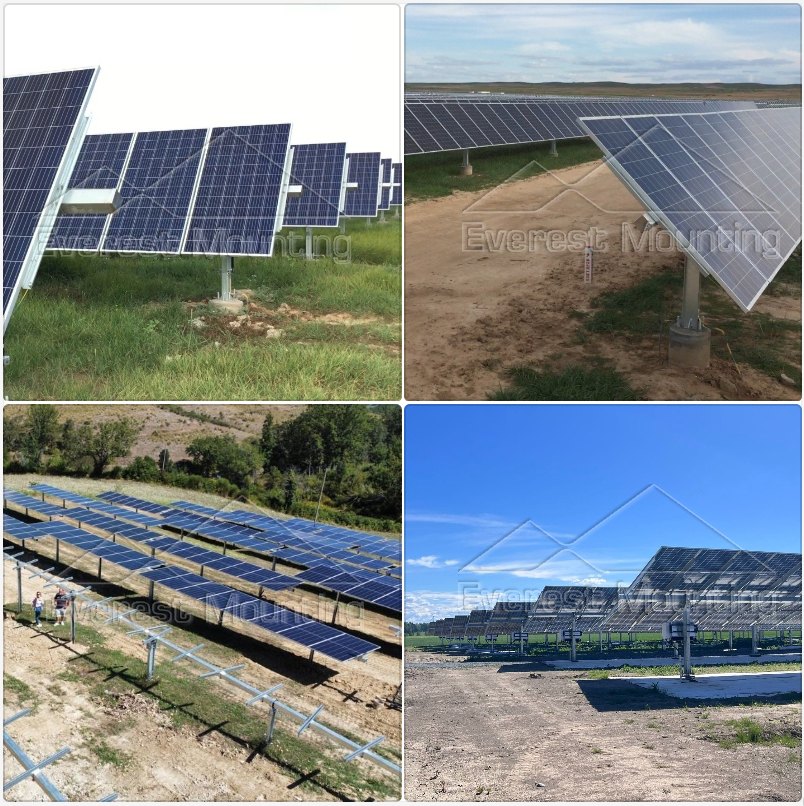Single-axis solar tracking systems can be rotated around a vertical axis (azimuthal tracking, HSAT) or a horizontal east-west axis (height tracking, VSAT) to accommodate changes in the sun's altitude in the sky throughout the day and from season to season
Order(MOQ) :
500KWProduct Origin :
Fujian,ChinaShipping Port :
XiamenDrive System :
24V DC Motor + Linear-actuatorBrand :
Everest MountingSingle-axis solar tracking systems improve energy efficiency by dynamically adjusting the position of solar panels to align with the sun's path. These systems are widely used around the world, especially at low and mid-latitudes, and can significantly increase the amount of power generated by a solar project.

Technical Specifications:
| STRUCTURE | ELECTRICAL | ||
| System type | Double portrait horizontal single-axis solar tracker system | Tracking method | Astronomical algorithm+closed-loop control (AI) |
| PV-Module quantity per row | 2Px60,2Px45 | Signal transmission | Wire RS485 or wireless (LoRa) |
| Tracking range | 士60°(Customized according to project) | Drive method | 24V DC Motor + Linear-actuator |
| Tracking accuracy | 士1° | Power supply | AC-powered or self-powered |
| Motor quantity | 2-3 unit | Backtracking | Yes |
| PROTECTION | ENVIRONMENT & OTHER | ||
| Wind protection | ≧18m/s | Operating temperature | -30°c to +60°C |
| Rotate to horizontal time | 6-7mins | Slope tolerance | North-south 10%~20%, East-west no limits |
| Overload prevention | Yes | Load design standard | GB,ASCE,BS EN,AS etc |
Advantage:
▶ Ensure tracking accuracy within ±0.5° by main and auxiliary controllers
▶ Use electrical control linkage for multi-point closed-loop control
▶ Achieve closed-loop control with build-in angle detection sensors for main and auxiliary controllers
▶ Decreasing the operating power of the motor
Project:

About Single Axis Solar Tracker System (FAQ):
1. What is the importance of Single Axis Solar Tracker System?
A Single Axis Solar Tracker System increases the efficiency of electricity production by orienting the solar panels so that they are always facing the sun. Such systems can significantly increase the energy gain of a PV system, in some cases by 25% to 35%.
2. What are the main types of single-axis solar tracking systems?
There are three main types of single-axis solar tracking systems: manual, active and passive. Manual tracking systems require manual adjustments; active tracking systems use motors and mechanical devices and do not require an additional energy supply; and passive tracking systems utilize liquid evaporation to respond to changes in the sun's rays.
3. Which is more economical, a single-axis solar tracking system or a dual-axis solar tracking system?
Single-axis solar tracking systems are more economical than dual-axis solar tracking systems because they have fewer components. Therefore, if you want to invest in a lower cost solar tracking system, single axis tracking system is a good choice.
4. How does a single-axis solar tracking system work?
A solar tracker adjusts the orientation of the solar panels based on the position of the sun in the sky. By keeping the panels perpendicular to the sun, more sunlight hits the solar panels, reflecting less light and absorbing more energy. This energy can be converted into electricity.
5. How environmentally adaptable is a single-axis solar tracking system?
Single-axis solar tracking systems need to be able to adapt to different environmental conditions and needs. They need to face the sun and therefore may be affected by shading from buildings, trees, etc. They also need to adapt to